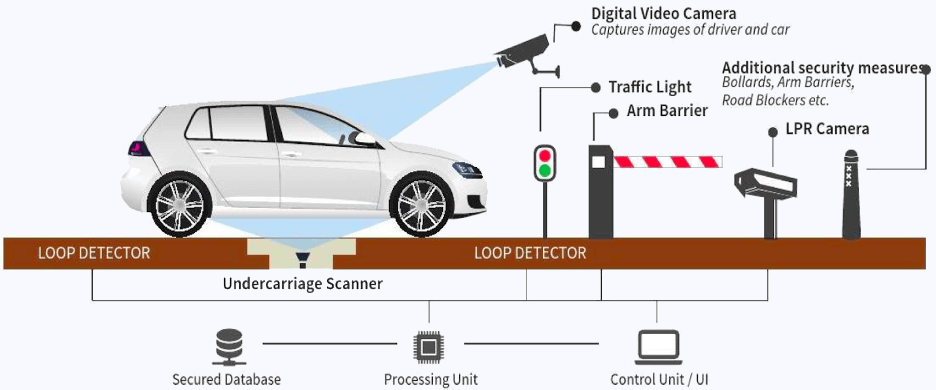
Background
Security is the biggest concern for military facilities. Modern military facilities face a wide variety of risks, from cyberattacks to data theft to terrorist attacks. The Corpus Christi Naval Air Station in Corpus Christi, Texas for example, dealt with three separate attempted intrusions in a year and a half.
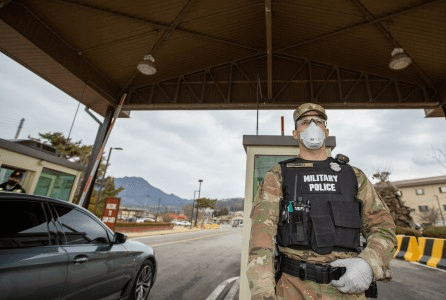
On February 14, 2019, a man driving a stolen SUV entered the base and attempted to exit through a separate entrance, but crashed his car and was then shot by security personnel. On October 7, 2019, just eight months later, the base went on lockdown again before an armed man was taken into custody.
Then, on May 21, 2020, seven months later, there was a third attempt to break into the base, this time by a man with known ties to terrorist groups. The man fired at the security guard at an entrance gate and struck her bulletproof vest before she raised the barrier to prevent the attacker from getting inside the base. The base’s security did a good job of preventing any serious damage during these attacks, but with the frequency of these incidents, more modern security may be needed to ensure that the next attack doesn’t end in catastrophe.
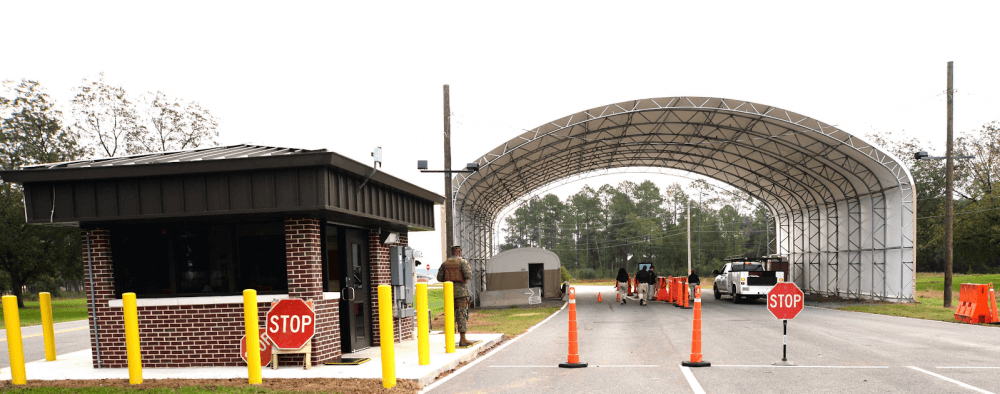
Modern times call for modern security solutions, and Helios by UVeye is the perfect option to protect sensitive facilities.
Helios is safer, improves security, makes security officers’ jobs easier, works in extreme conditions, and can even identify vehicle passengers with high body temperatures to help prevent the spread of COVID-19.
Helios UVIS uses machine learning and artificial intelligence to inspect the undercarriage of any vehicle that drives over its multiple high-resolution cameras. It alerts the user on any irregularities or foreign objects hidden in the undercarriage.
Inspecting the undercarriages of vehicles is very difficult for security personnel. Before Helios, there was never an effective solution for under-vehicle inspection, and even if security officers inspect the undercarriage, they may not know what to look for. They may not recognize a threat and allow a vehicle with a weapon, bomb, or other illicit or dangerous item to enter the facility.
Improved Safety for Security Officers at Military Facilities
Security officers put themselves at great risk by manually inspecting vehicles, as evidenced by the attempted terrorist attack in Corpus Christi in May.
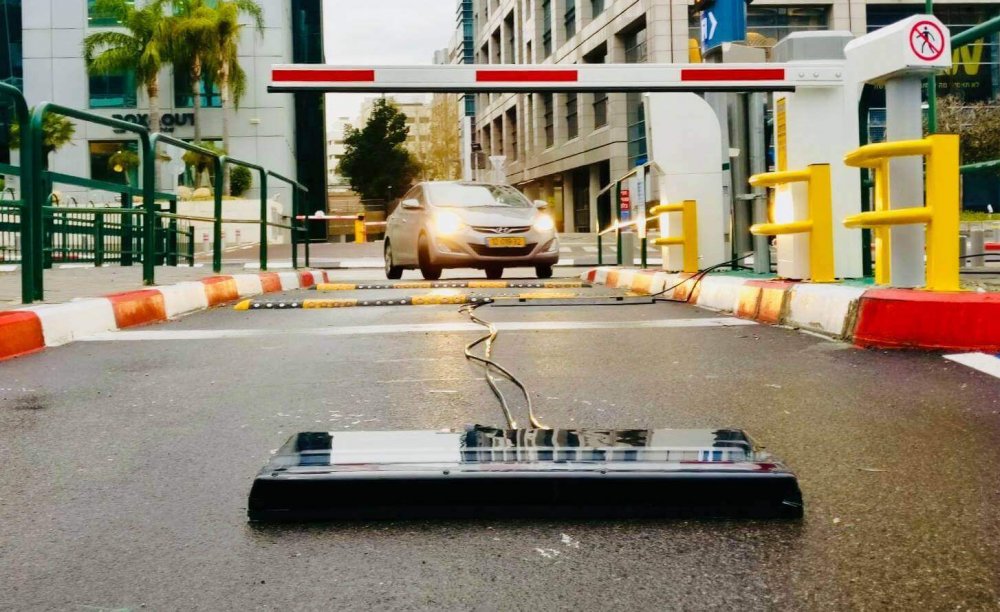
With Helios, the security guard can inspect the vehicle from a safe distance by simply looking at the high-resolution images and checking for anything suspicious or unusual in the undercarriage
Improved Security at Military Facilities
No matter how well trained a security officer is, all humans make mistakes. However, with Helios, the chances of human error are greatly reduced. The system produces high-quality images of the undercarriages and alerts the security officer of any irregularities. It will even detect issues in the undercarriage of a vehicle passing through the system for the first time.
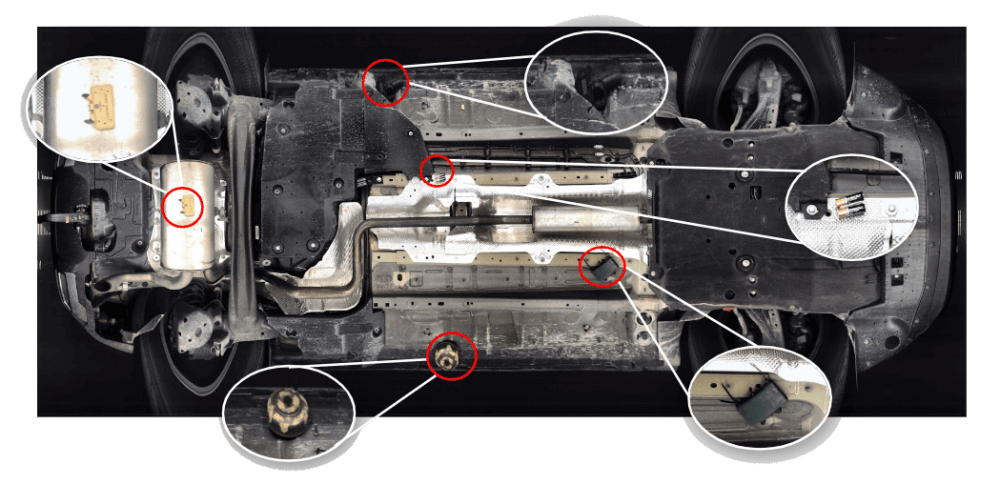
Makes Security Officer’s Job Easier
Detecting potential threats is easy with UVIS. The high-resolution images allow a security officer to see the entire undercarriage very clearly to determine whether there is anything suspicious. Instead of manually inspecting the vehicle and putting themselves at risk, security officers can inspect the vehicle from a more relaxed and safer environment and zoom in on the smallest details. Plus, Helios provides a side-by-side view of previous scans from the same vehicle if it has gone through the system before to make it easier for the officer to notice any differences.

Durable and Works in Extreme Conditions
Helios can withstand up to 20 tons per axle, meaning that it will survive being run over by even massive vehicles. It is fully operational at temperatures between -20 and 40 degrees Celsius and is IP 68/54 compliant, meaning it offers full protection against sand, dust, or rain.
Can Help Combat COVID-19
UVeye’s thermal sensor can also detect the body temperatures of vehicle passengers, which can identify visitors with potential fevers, improving the safety of everyone on the base.
The Impact - multi layer access control security
UVeye fully supports 3rd party integration & provides a multiple layer of security for any facility
Integrations made in the past
ALPR System
Face Detection / Recognition
Arm Barriers / Bollards
VMS (Video Management System)
Use Cases Include
Central System for maintaining data
Integrating to the centralized server provides the capability of connecting multiple systems or lanes across different sites while enabling central management and control via one screen. The centralized management system enables the client to access the different systems deployed and manage the different users and historical data.
